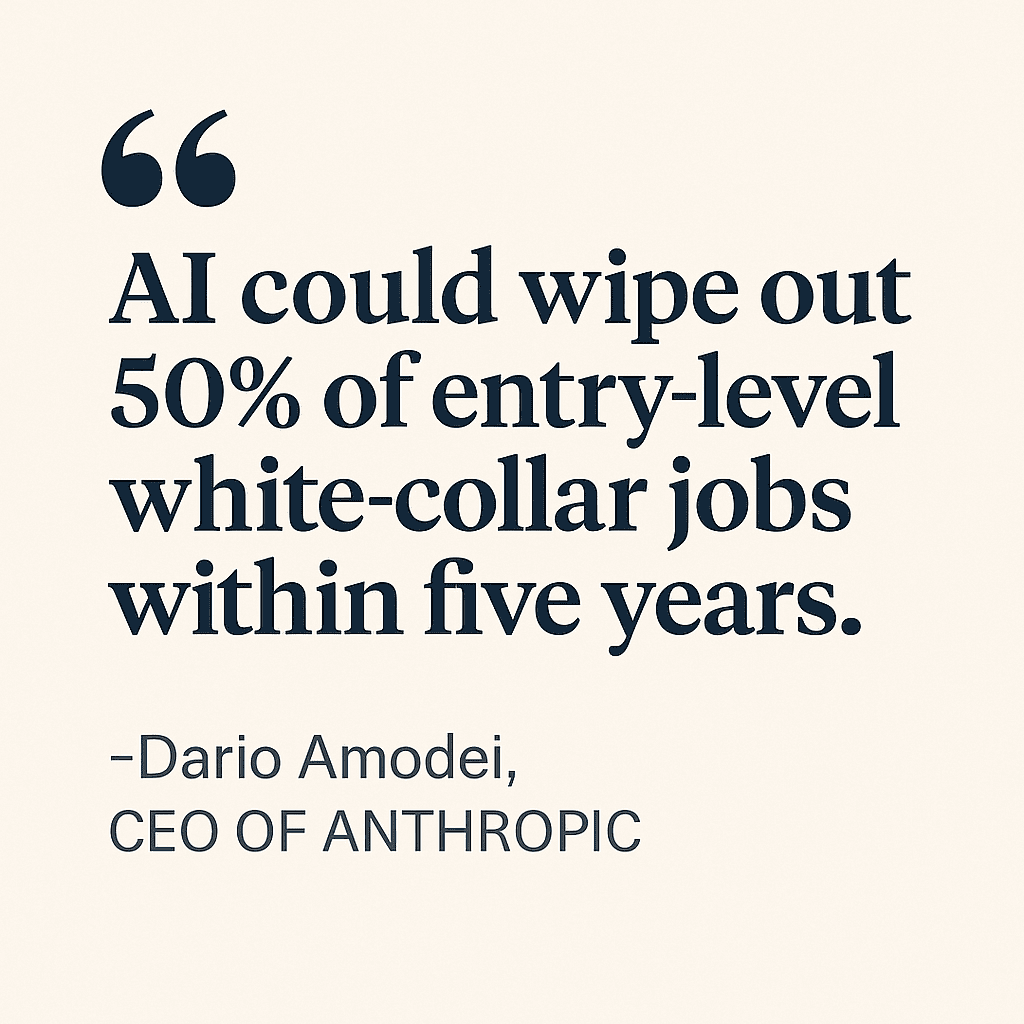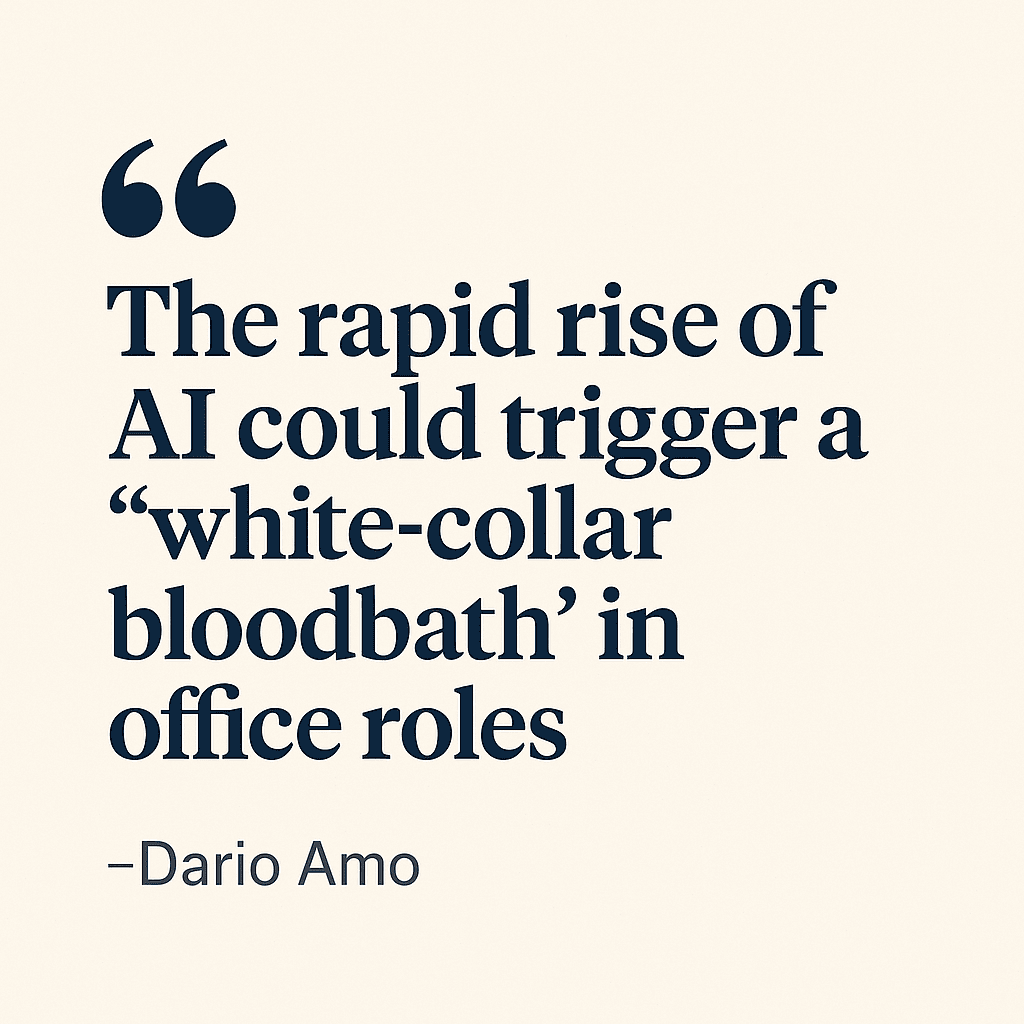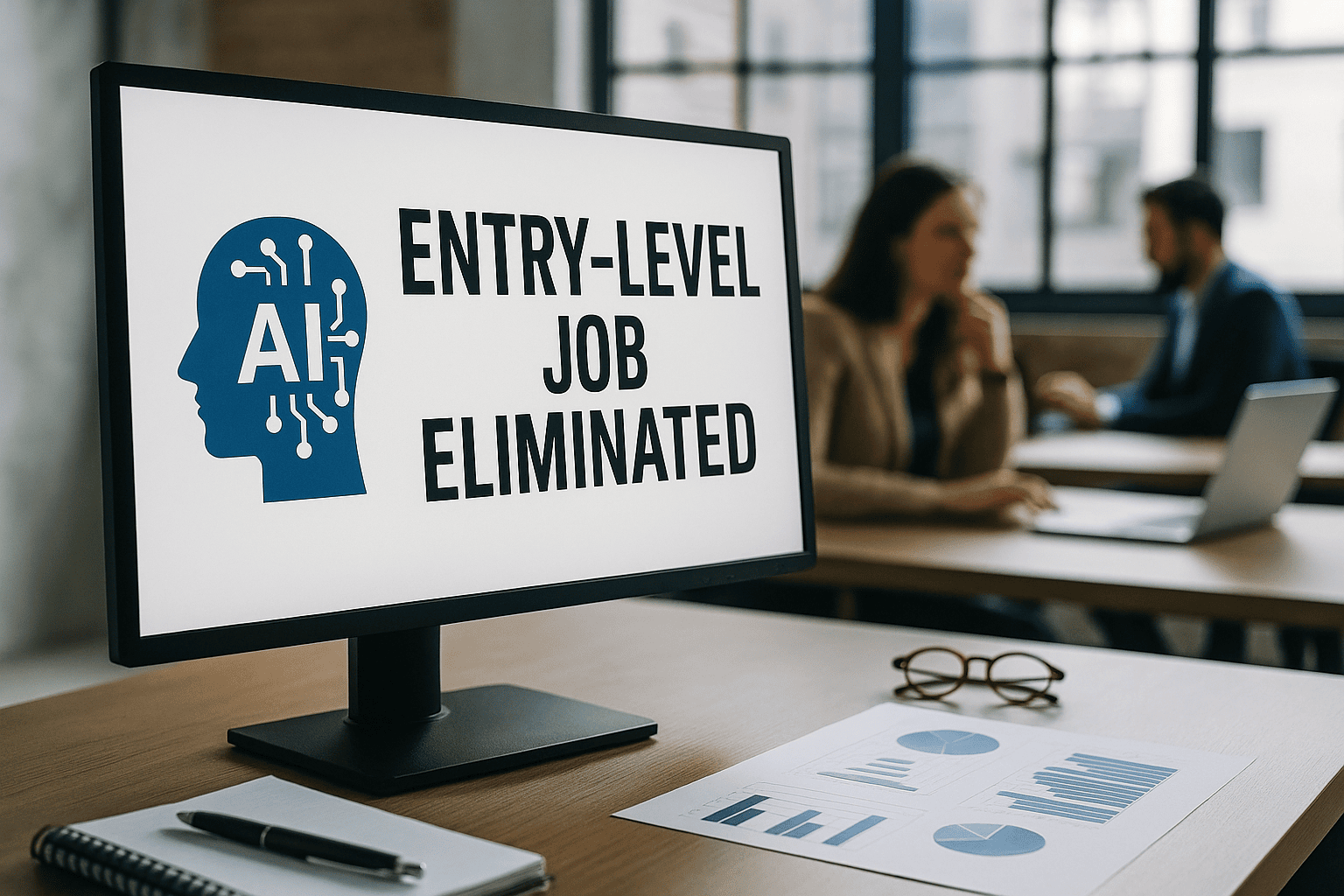There’s a silent tsunami approaching—one that’s poised to decimate the corporate entry-level as we know it.
According to Dario Amodei, CEO of Anthropic, within just five years, artificial intelligence could obliterate up to 50% of all entry-level white-collar jobs. Not reassign. Not reskill. Erase. The consequences of this projected “white-collar bloodbath” could thrust the U.S. unemployment rate into the double digits, echoing economic eras we vowed never to repeat.
But this isn’t just about jobs vanishing. It’s about the infrastructure of opportunity collapsing under the weight of algorithmic efficiency and profit-driven automation. Entry-level positions have long served as the on-ramps to professional growth, socioeconomic mobility, and experiential learning. What happens when those on-ramps are replaced with barriers? Let’s explore the full landscape—and the strategic implications for founders, executives, and policymakers.
The White-Collar Shakeout: Forecast or Fearmongering?
Amodei’s warning may seem hyperbolic on the surface. After all, he offered no empirical dataset to back the 50% estimate. Critics like Mark Cuban were quick to respond with historical perspective, reminding us that job evolution has always followed technological disruption. Cuban argued: “Someone needs to remind the CEO that there were once over 2 million secretaries in the U.S… jobs evolved, not disappeared.”
While that point holds partial truth, the velocity and scale of AI’s advancement changes the equation. We are no longer dealing with industrial or mechanical automation alone. We’re dealing with large language models, generative AI, and algorithmic cognition capable of performing tasks previously reserved for educated human intellect—and doing it faster, cheaper, and with scalable precision.
Let’s ground this conversation in research:
- A Goldman Sachs report projects that 300 million full-time jobs globally could be affected or automated by generative AI. In the U.S. and Europe, two-thirds of current jobs are exposed to some degree of automation.
- The World Economic Forum’s Future of Jobs Report 2023 revealed that over 80% of companies plan to adopt AI, big data, and cloud computing by 2027. Simultaneously, it predicts a net loss of 14 million jobs globally by that time—primarily in clerical, administrative, and data entry functions.
- IBM recently paused hiring for approximately 7,800 back-office roles, explicitly acknowledging that AI can perform many of these duties more efficiently.
"The writing is no longer on the wall. It’s embedded in the code."

The Disappearing Launchpad: Entry-Level Jobs Under Siege
Entry-level corporate jobs have historically served as vital career incubators. They’re the proving grounds—where fresh graduates and career shifters get their start, learn culture, hone soft skills, and develop strategic thinking. But AI doesn’t need onboarding. It doesn’t take coffee breaks. It doesn’t outgrow its position.
A New York Times investigative feature recently highlighted how recent graduates are now entering sectors that increasingly “have little use for their skills.” They’re seen as “expensive and expendable”, often replaced by automation tools that don’t carry salary expectations or healthcare benefits.
LinkedIn’s VP of Talent and Workforce, Dan Shapero, echoed this sentiment, noting that “AI is already starting to take jobs from new grads”—not in theory, but in observable reality.
This isn’t just a Gen Z problem. It’s a long-term ecosystem crisis. Remove the bottom rung of the ladder, and upward mobility becomes inaccessible. The talent pipeline collapses, succession planning gets bottlenecked, and leadership development flatlines.

Beyond the Numbers: Strategic Implications for Organizations
As a Strategic Solution Architect, I challenge executives, HR leaders, and entrepreneurs to view this not just through the lens of cost-efficiency, but through strategic ecosystem design. Consider the ripple effect:
- Talent Shortages at the Top: Without entry-level growth, how will mid-level roles be filled in five years? Who will be seasoned enough for future leadership succession?
- Workforce Fragility: Relying solely on AI creates brittle systems. Humans provide adaptability, ethical judgment, and contextual insight that machines still lack.
- Brand Reputation & Cultural Backlash: Firms perceived as gutting job opportunities for young professionals may face backlash from both consumers and talent pools.
Strategic management must now include a dual lens: AI implementation and human integration. That’s the real game-changer.
Policy Pulse: Governments Begin to Stir
Recognizing the urgency, the White House, Department of Labor, and various Congressional committees have initiated inquiries into AI’s labor impact. Policy proposals range from:
- AI displacement audits
- Retraining and upskilling subsidies
- AI hiring regulation transparency laws
- “Human-in-the-loop” AI oversight requirements
However, most of these policies remain in early discussion. The pace of policymaking lags far behind the pace of technological deployment—a dangerous imbalance if left unchecked.

Strategic Solutions: What Must Be Done Now
Here’s how forward-thinking organizations and leaders can respond with agility, not fear:
🔍 1. Perform a Strategic Workforce Audit
Map roles most susceptible to automation. Reallocate or redesign those functions to foster hybrid human-AI collaborations instead of outright replacement.
🧠 2. Invest in Cognitive Apprenticeships
Create “AI-augmented entry roles” where young talent works *alongside* AI tools, learning both task execution and AI oversight.
🚧 3. Implement Internal Skilling Hubs
Companies like Amazon and AT&T have launched in-house academies for transitioning employees. Your business should too—even at a smaller scale.
📊 4. Redesign the Job Ladder
Don’t eliminate entry points. Reimagine them. Infuse data literacy, prompt engineering, and digital ethics into onboarding curriculums. Equip new workers to become AI facilitators, not casualties.
🤝 5. Enforce Strategic Accountability
This isn’t just a tech issue. It’s a leadership responsibility. Founders and executives must be held accountable not only for profit margins, but for people margins—ensuring that AI is a multiplier, not a destroyer, of human potential.
Final Thought: We Must Design the Future We Want
If we allow market forces to dictate the future of work unilaterally, we risk constructing a professional world that’s faster—but emptier. One with productivity gains but purpose loss. One where young minds are displaced before they even enter the arena.
This is the moment for us—founders, strategists, policymakers, and citizens—to architect a new path. One that doesn’t merely automate the present, but intelligently evolves it.
Let’s not wait until the ladder has no bottom rung left.
Let’s reforge it—strategically, sustainably, and equitably.
Shawn Ryan Randleman
Your Solution Guru | Strategic Architect | Founder, Solution Guru Brands*

